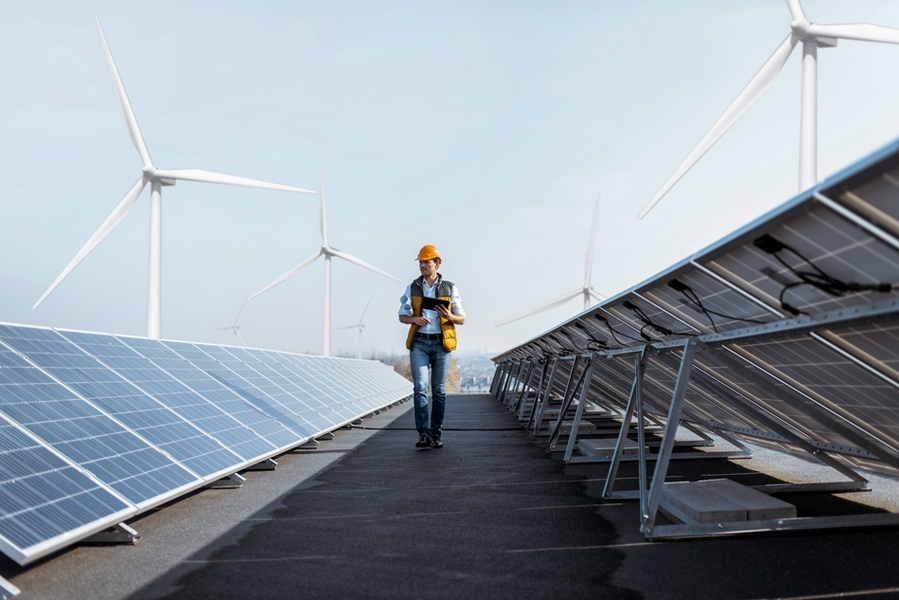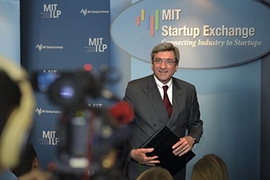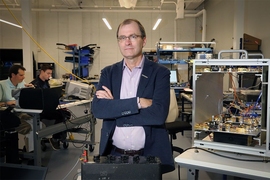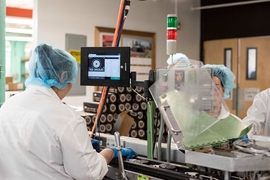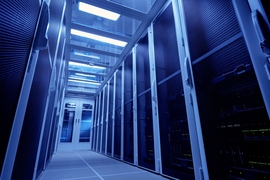Most people only think about the systems that power their cities when something goes wrong. Unfortunately, many people in the San Francisco Bay Area had a lot to think about recently when their utility company began scheduled power outages in an attempt to prevent wildfires. The decision came after devastating fires last year were found to be the result of faulty equipment, including transformers.
Transformers are the links between power plants, power transmission lines, and distribution networks. If something goes wrong with a transformer, entire power plants can go dark. To fix the problem, operators work around the clock to assess various components of the plant, consider disparate data sources, and decide what needs to be repaired or replaced.
Power equipment maintenance and failure is such a far-reaching problem it’s difficult to attach a dollar sign to. Beyond the lost revenue of the plant, there are businesses that can’t operate, people stuck in elevators and subways, and schools that can’t open.
Now the startup Tagup is working to modernize the maintenance of transformers and other industrial equipment. The company’s platform lets operators view all of their data streams in one place and use machine learning to estimate if and when components will fail.
Founded by CEO Jon Garrity ’11 and CTO Will Vega-Brown ’11, SM ’13 — who recently completed his PhD program in MIT’s Department of Mechanical Engineering and will be graduating this month — Tagup is currently being used by energy companies to monitor approximately 60,000 pieces of equipment around North America and Europe. That includes transformers, offshore wind turbines, and reverse osmosis systems for water filtration, among other things.
“Our mission is to use AI to make the machines that power the world safer, more reliable, and more efficient,” Garrity says.
A light bulb goes on
Vega-Brown and Garrity crossed paths in a number of ways at MIT over the years. As undergraduates, they took a few of the same courses, with Vega-Brown double majoring in mechanical engineering and physics and Garrity double majoring in economics and physics. They were also fraternity brothers as well as teammates on the football team.
Garrity was first exposed to entrepreneurship as an undergraduate in MIT’s Energy Ventures class and in the Martin Trust Center for Entrepreneurship. Later, when Garrity returned to campus while attending Harvard Business School and Vega-Brown was pursuing his doctorate, they were again classmates in MIT’s New Enterprises course.
Still, the founders didn’t think about starting a company until 2015, after Garrity had worked at GE Energy and Vega-Brown was well into his PhD work at MIT’s Computer Science and Artificial Intelligence Laboratory.
At GE, Garrity discovered an intriguing business model through which critical assets like jet engines were leased by customers — in this case airlines — rather than purchased, and manufacturers held responsibility for remotely monitoring and maintaining them. The arrangement allowed GE and others to leverage their engineering expertise while the customers focused on their own industries.
"When I worked at GE, I always wondered: Why isn’t this service available for any equipment type? The answer is economics.” Garrity says. “It is expensive to set up a remote monitoring center, to instrument the equipment in the field, to staff the 50 or more engineering subject matter experts, and to provide the support required to end customers. The cost of equipment failure, both in terms of business interruption and equipment breakdown, must be enormous to justify the high average fixed cost."
“We realized two things,” Garrity continues. “With the increasing availability of sensors and cloud infrastructure, we can dramatically reduce the cost [of monitoring critical assets] from the infrastructure and communications side. And, with new machine-learning methods, we can increase the productivity of engineers who review equipment data manually.”
That realization led to Tagup, though it would take time to prove the founders’ technology. “The problem with using AI for industrial applications is the lack of high-quality data,” Vega-Brown explains. “Many of our customers have giant datasets, but the information density in industrial data is often quite low. That means we need to be very careful in how we hunt for signal and validate our models, so that we can reliably make accurate forecasts and predictions.”
The founders leveraged their MIT ties to get the company off the ground. They received guidance from MIT’s Venture Mentoring Service, and Tagup was in the first cohort of startups accepted into the MIT Industrial Liaison Program’s (ILP) STEX 25 accelerator, which connects high potential startups with members of industry. Tagup has since secured several customers through ILP, and those early partnerships helped the company train and validate some of its machine-learning models.
Making power more reliable
Tagup’s platform combines all of a customer’s equipment data into one sortable master list that displays the likelihood of each asset causing a disruption. Users can click on specific assets to see charts of historic data and trends that feed into Tagup’s models.
The company doesn’t deploy any sensors of its own. Instead, it combines customers’ real-time sensor measurements with other data sources like maintenance records and machine parameters to improve its proprietary machine-learning models.
The founders also began with a focused approach to building their system. Transformers were one of the first types of equipment they worked with, and they’ve expanded to other groups of assets gradually.
Tagup’s first deployment was in August of 2016 with a power plant that faces the Charles River close to MIT’s campus. Just a few months after it was installed, Garrity was at a meeting overseas when he got a call from the plant manager about a transformer that had just gone offline unexpectedly. From his phone, Garrity was able to inspect real-time data from the transformer and give the manager the information he needed to restart the system. Garrity says it saved the plant about 26 hours of downtime and $150,000 in revenue.
“These are really catastrophic events in terms of business outcomes,” Garrity says, noting transformer failures are estimated to cost $23 billion annually.
Since then they’ve secured partnerships with several large utility companies, including National Grid and Consolidated Edison Company of New York.
Down the line, Garrity and Vega-Brown are excited about using machine learning to control the operation of equipment. For example, a machine could manage itself in the same way an autonomous car can sense an obstacle and steer around it.
Those capabilities have major implications for the systems that ensure the lights go on when we flip switches at night.
“Where it gets really exciting is moving toward optimization,” Garrity says. Vega-Brown agrees, adding, “Enormous amounts of power and water are wasted because there aren't enough experts to tune the controllers on every industrial machine in the world. If we can use AI to capture some of the expert knowledge in an algorithm, we can cut inefficiency and improve safety at scale.”
